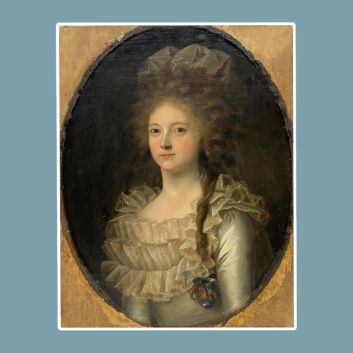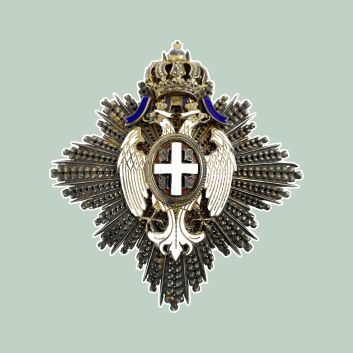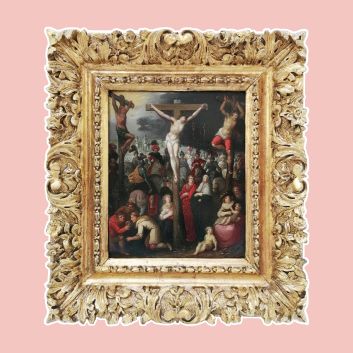Rating and value of Catholic icons, tempera on wood
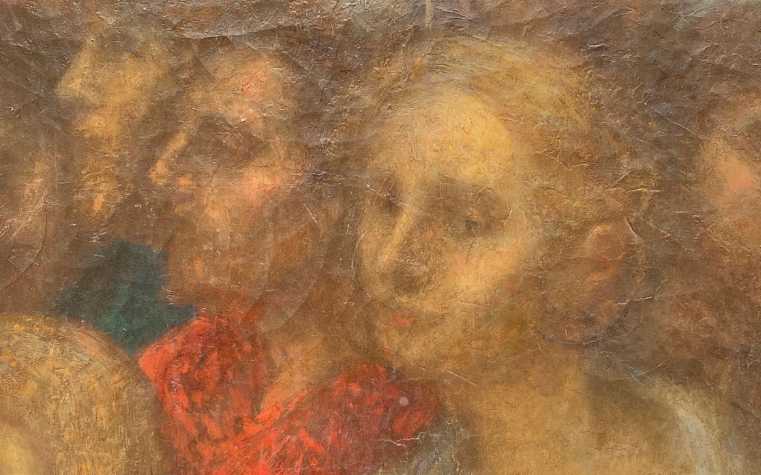
If you own a Catholic icon, and would like to know its value, our state-approved experts and auctioneers will offer you their appraisal services. Our specialists will carry out a free appraisal of your work, and provide you with a precise estimate of its value on today's market. Then, if you wish to sell your work, we'll guide you towards the best possible arrangement to obtain the optimum price.
Rating and value of Catholic icons
Catholic icons are very popular on the auction market, whatever the period. Today, prices for these works are reaching unprecedented heights under auctioneers' gavels. They are particularly prized by European buyers. The price at which they sell on the art market ranges from €10 to €42,350, a considerable delta but one that speaks volumes about the value that can be attributed to Catholic icons. In 2023, an Art Nouveau-inspired triptych travel icon in vermeil sold for €20,000.
Order of value from a simple work to the most prestigious
Icon type | Results |
|---|---|
Saint's icon | From €20 to €1,400 |
Jesus icon | From €10 to €2,360 |
Icon of prophets | From €40 to €18,000 |
Allegorical icon | From €20 to €18,590 |
Virgin and Child Icon | From €10 to €21,000 |
Polyptych icon | From €80 to €43,350 |
Response in less than 24h
Define an icon
An icon(eikon in ancient Greek, meaning image) is a representation of the saints in the Christian religion. Catholic and Orthodox Christians use these representations to visualize key moments in the Bible and its characters. Protestants have no such images. Catholic icons are particularly famous, with the themes of the Virgin and Child and the stages of the Stations of the Cross particularly well represented. These icons are mostly painted in tempera on wood, the term " tempera painting" referring only to the composition of the paint used.
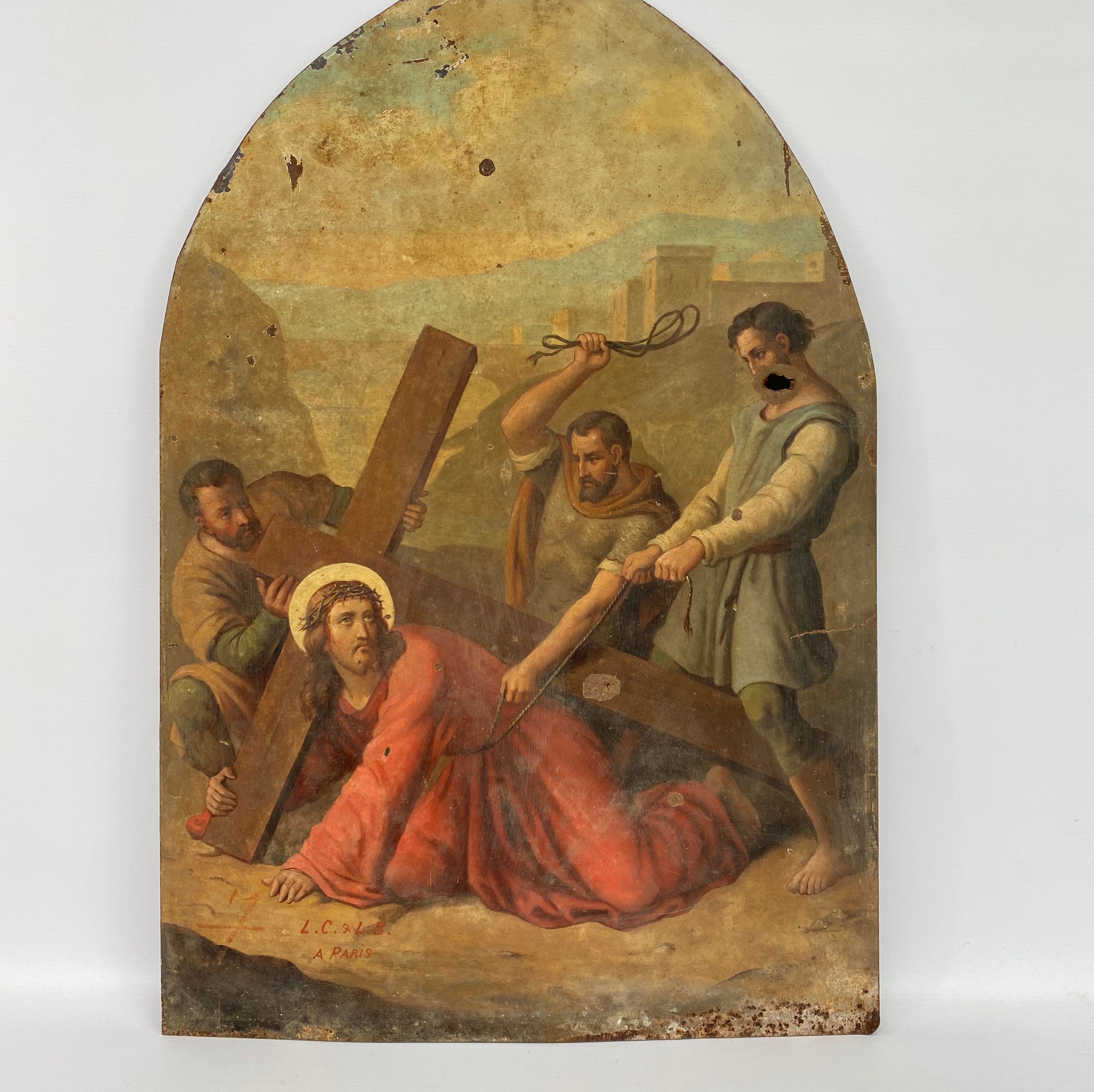
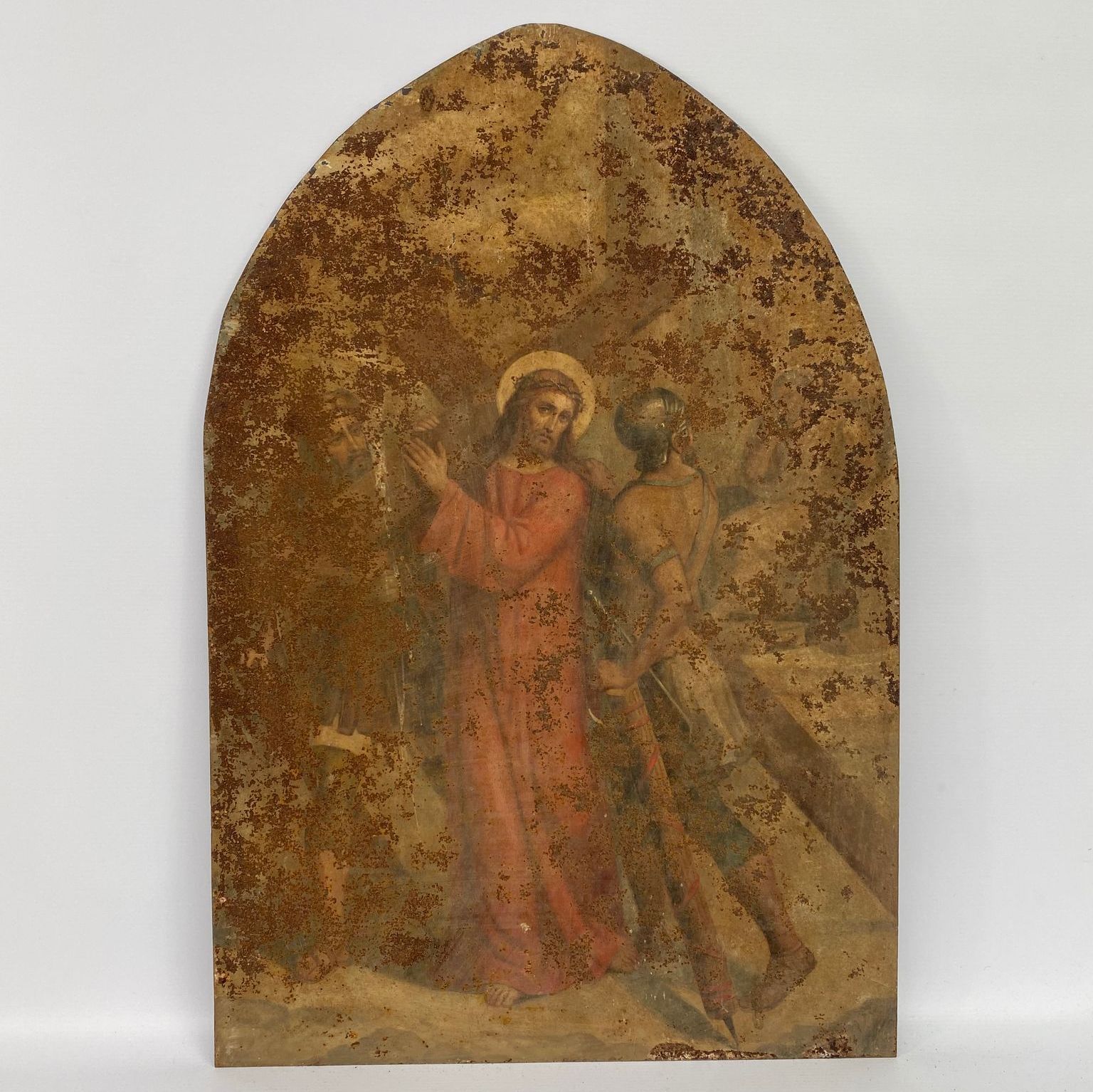
History of Catholic icons
Very early on, religious icons were subject to strict stylistic constraints. The subjects depicted and the colors used were regulated. Among Catholics, the veneration of icons is as important as lectio divina, the interpretation of biblical texts.
By the early Middle Ages, the technique of painting on wood was well known and fairly well mastered. Faced with the need to depict scenes from the Bible and various important figures in the Catholic religion, medieval artists were quick to produce icons for private devotion, hung in domestic interiors.
In places of worship, churches and chapels, some of these works were also often displayed on the walls, to complement the stained-glass windows and paintings for the faithful, who were often illiterate at the time.
During the Renaissance, the style of these representations changed, but the technique remained the same. Some are inspired by the First Renaissance and the canons of Antique bodies and faces, while others are characterized by Mannerist inspiration (elongation of bodies and use of pastel colors).
Gilding is also widely used in this type of work.
The production of icons has also been used extensively for the Stations of the Cross, 12 icons traditionally hung on the walls of a church to remind us of the stages of the Crucifixion.
The icons most present in Catholic tradition
Today and since the Middle Ages, certain icons have become very popular. These include those of the Virgin and Child, but also representations of various saints highly venerated in the Catholic Church: the four evangelists: Matthew, Luke, John and Mark. The twelve apostles are also well represented, including Saint Peter and Saint Paul. Naturally, the majority of Catholic icons depict Christ at various stages of his life, with some of the most popular iconographies still in use: the Descent from the Cross, the Nativity, the Last Supper and the Coronation of Thorns.
Their current value on the auction market
Icons have a high, stable price on the art market and are sought after by bidders. Their value can vary according to their state of preservation, date and subject.
Date your icon
It is possible to give an order of magnitude for the date of the icon, depending on its condition. The state of conservation of your object and the study of pictorial techniques will be carried out beforehand to determine the most precise date possible.
Knowing the value of a work
If you happen to own a Catholic icon, or think that your object might be one, don't hesitate to request a free appraisal using the form on our website. A member of our team of experts and chartered auctioneers will contact you promptly to provide you with an estimate of the market value of your work, as well as any relevant information about it. If you wish to sell your work of art, our specialists will also be on hand to offer you alternatives for selling it at the best possible price, taking into account market trends.
Response in less than 24h
Related topics
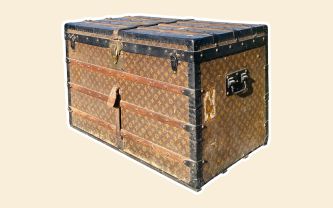
Get a free estimate for your fashion and leather goods...
Vintage fashion and leather goods are constantly evolving, with unique creations to be appraised by certified experts.
Read more >

Rating and value of works, paintings, drawings by the École de...
The Barbizon School brings together landscape painters of varying degrees of renown who are quite popular at auction. The price of these paintings is fairly stable.
Read more >
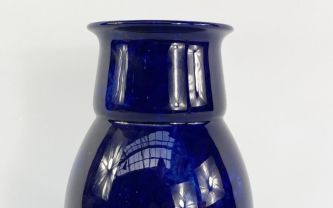
2024 rating and value of Sèvres porcelain vases
Sèvres porcelain vases are particularly popular and sought-after items on the auction market. Their value is high.
Read more >
Secure site, anonymity preserved
State-approved auctioneer and expert
Free, certified estimates
